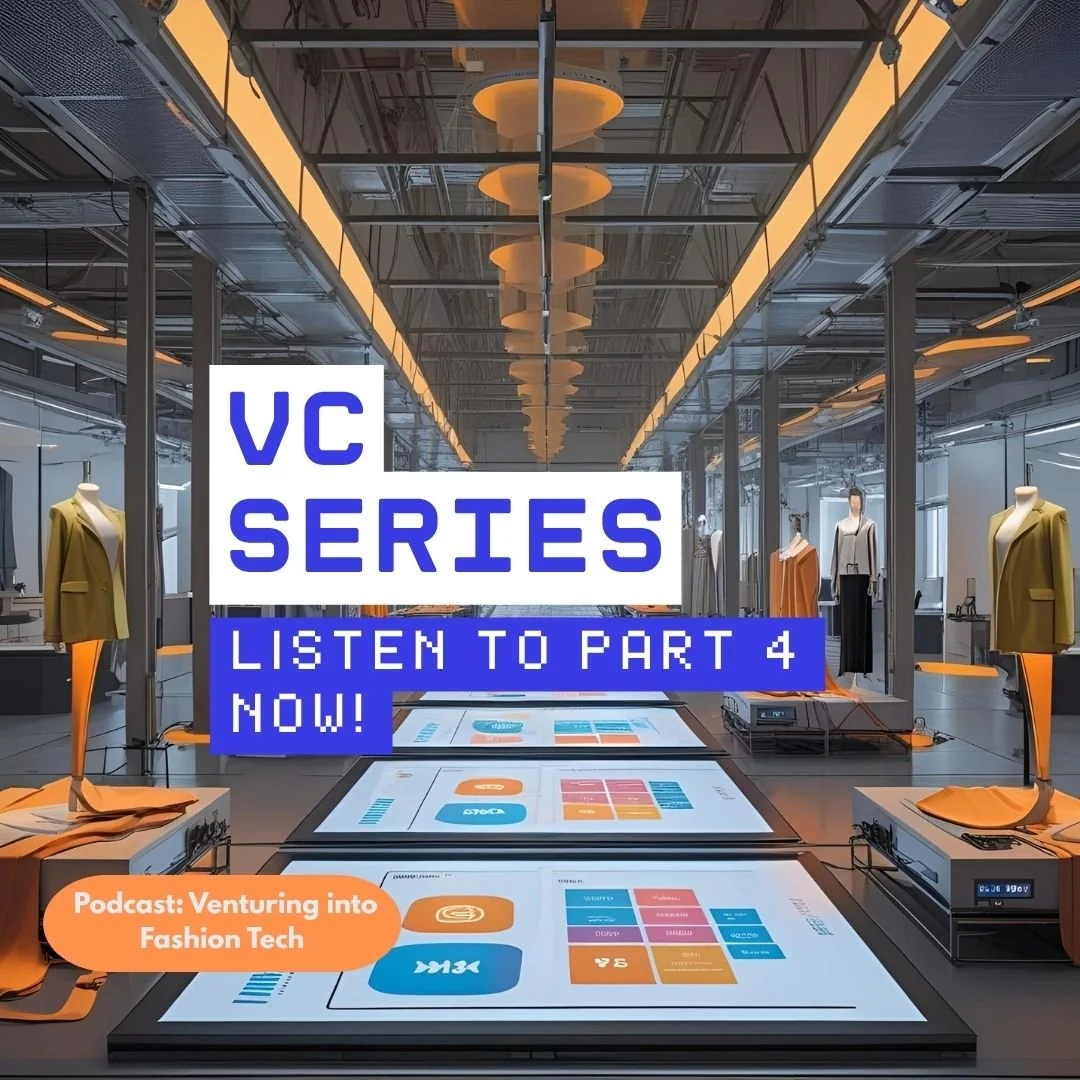Unpacking VC Hesitation in Fashion Tech
Welcome back, fashion tech enthusiasts!
This article accompanies our podcast ‘VC Series’, 4 episodes in conversation with Rohan Bansal on the venture capital space. This is part 4 of the final episode of the fashion tech investment mini-series, where Peter Jeun Ho Tsang and Rohan Bansal unpack why traditional VCs often shy away from the sector, citing expertise gaps and complex industry dynamics. Despite major exits and rising innovation needs, fashion tech remains underfunded—presenting a $20–30 billion annual gap and ripe opportunities for informed investors.
Listen to the full conversation:
A Booming Sector, Still Underserved
Fashion tech is experiencing a significant moment of growth and opportunity, yet remains surprisingly underserved by specialized venture capital funds. In 2024 alone, the global fashion tech industry raised nearly $3 billion across 200 investment rounds, demonstrating substantial market traction. With successful exits like Futuri's $200 million IPO on the Tokyo Stock Exchange and numerous acquisitions by major fashion houses, the sector clearly offers viable investment pathways. So why do traditional VCs remain hesitant to create dedicated fashion tech funds?
Despite the capital inflow and notable exits, fashion tech remains on the sidelines of most venture portfolios. Startups are proving they can deliver scale and returns, but the ecosystem still lacks the dedicated capital infrastructure of adjacent sectors—like fintech or healthtech-tThe momentum is real, but the capital commitment hasn’t caught up.
Why VCs Remain Cautious?
The hesitation stems from several key factors that create barriers to entry for generalist VCs. Most notably, traditional venture firms often lack specialized expertise in fashion retail operations and industry dynamics. As Rohan Bansal explains,
"Generalist VCs just don't have that many people that they hire from the fashion industry or the retail industry. They tend to go with people with tech backgrounds or financial backgrounds who understand fashion to an extent, but not enough to potentially be investing in them."
This expertise gap creates uncertainty about market dynamics, trend cycles, and potential exit strategies.
What Investors Look for in Early-Stage Fashion Tech Startups
Fashion's cyclical nature introduces another layer of complexity. The industry experiences volatile trends, fluctuating consumer demand, and complex supply chains that can create unpredictable business environments. Recent examples from both fast fashion giants like Inditex (owner of Zara) and luxury conglomerates demonstrate how quickly fortunes can shift. These cycles can deter investors who prefer more linear growth trajectories.
However, these challenges also present opportunities. As fashion companies look for new ways to adapt, they increasingly turn toward technology—from supply chain digitization to AI-driven design—to stay competitive. This shift creates openings for startups that can provide innovation where legacy players are falling behind.
A $20–30Bn Funding Gap
The fashion tech industry currently faces a substantial annual funding gap estimated between $20–30 billion, representing enormous untapped potential. This gap is not just a financial shortfall—it’s a signal that many promising innovations are going unfunded. Closing this gap will require collaboration between multiple stakeholders. As Rohan notes, "Corporate buying and corporates doing pilot programs, doing projects around this needs to be kind of also investing with other VCs and co-investing." Corporate involvement, government subsidies, academic research, and early-stage accelerators will all play crucial roles in establishing a healthy funding pipeline.
Beyond just injecting capital, corporate partners can offer validation, distribution channels, and feedback loops that de-risk investments. Co-investment models between strategic corporates and venture capital firms can increase confidence and attract more participants to the space. Meanwhile, government-led R&D initiatives and sustainability mandates can also act as powerful incentives to draw VC attention to fashion tech.
Hardware vs. Software in Fashion Tech
Both hardware and software solutions present viable opportunities—but with distinct scaling models and risk profiles. Software tends to scale faster and more cheaply, making it the obvious first choice for many investors. From virtual try-on tools like AIMIRR, to inventory optimization software, SaaS remains a dominant trend.
Yet, hardware and "hard tech" are increasingly critical. Innovations in textile recycling, 3D knitting, or automation in production lines offer defensible moats and significant value to brands trying to compete on efficiency and sustainability, for example Wi Metrix. "Hard tech solutions that are really powering a lot of stuff internally are hard to replace, which also decreases churn," Bansal explains. Despite higher upfront costs, these solutions offer stickier customer relationships and long-term value creation.
Examples: textile‑recycling market valued at $5.76 billion in 2023, projected to reach $8.49 billion by 2032
Looking Ahead: A Promising Future
The future of fashion tech investment looks promising despite current hesitations. As regulatory pressures around sustainability increase and consumer behaviors continue shifting toward digital-first shopping experiences, fashion companies face growing pressure to innovate. This creates fertile ground for startups offering solutions across the value chain—from sustainable materials and AI-powered design tools like T-Fashion, to personalised shopping like Quissly and Monova, and on-demand manufacturing.
For venture capitalists willing to develop specialised expertise and networks in the fashion industry, this underserved market represents a significant opportunity to generate outsized returns. It also offers a chance to contribute to the technological transformation of one of the world’s largest consumer sectors.
Interested in Investing into Fashion Tech?
Join the Beyond Form investor network to back visionary founders, access curated deals, and help redefine the future of fashion tech.

